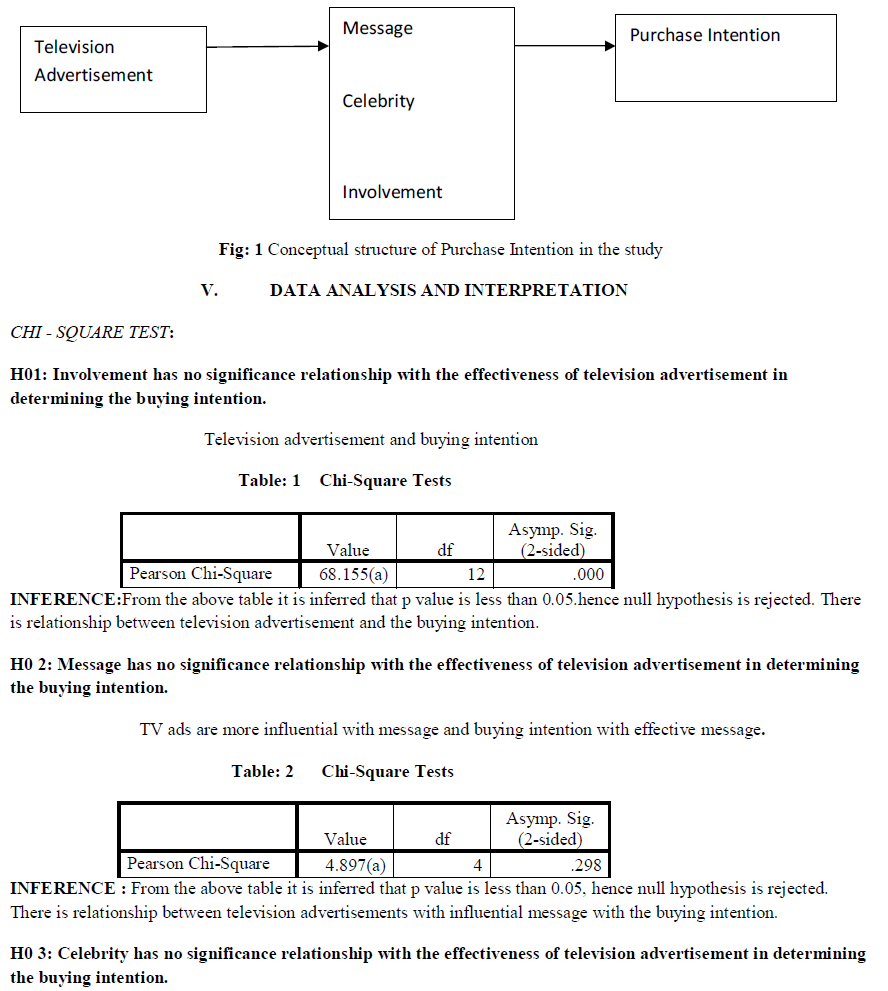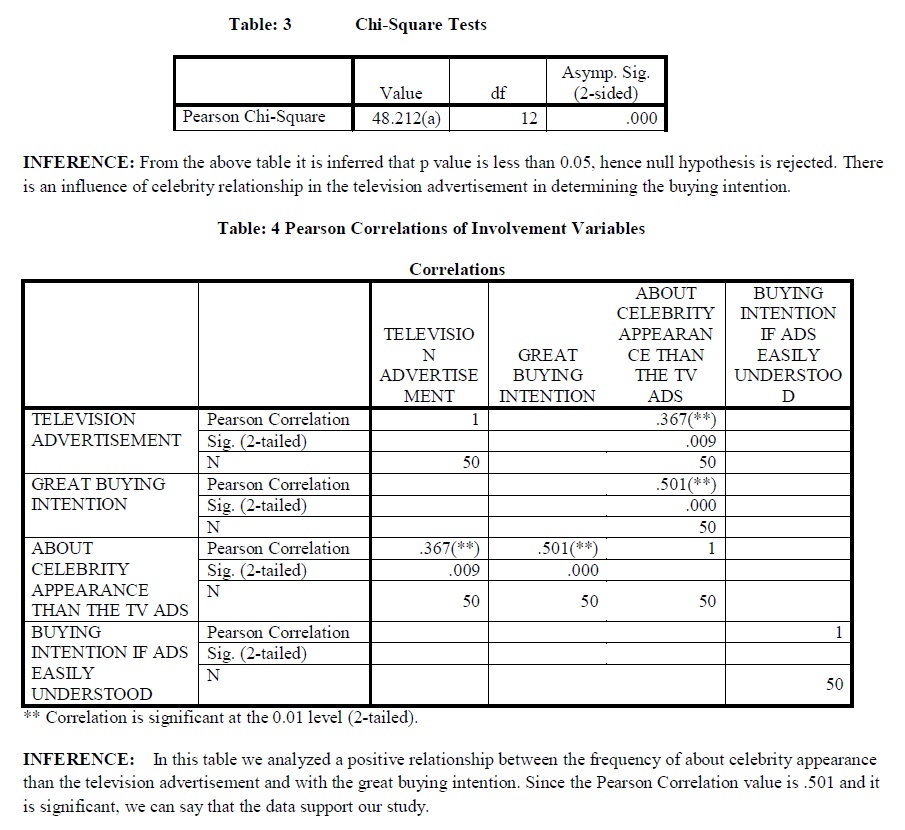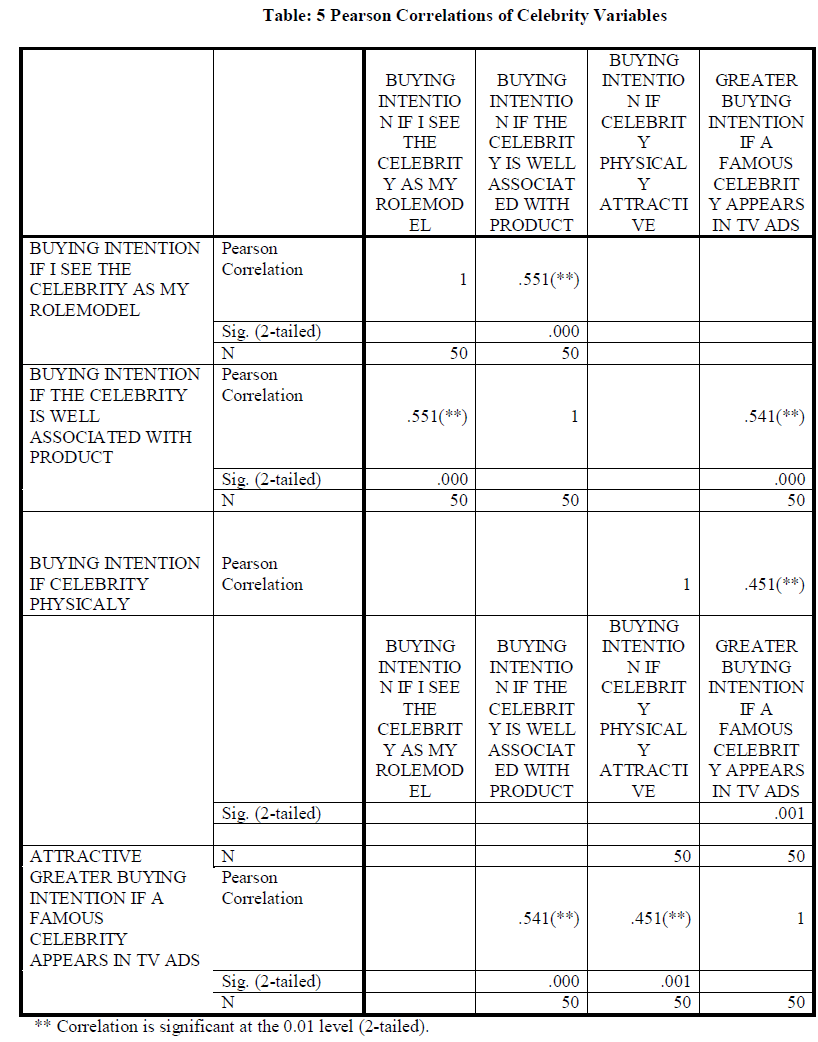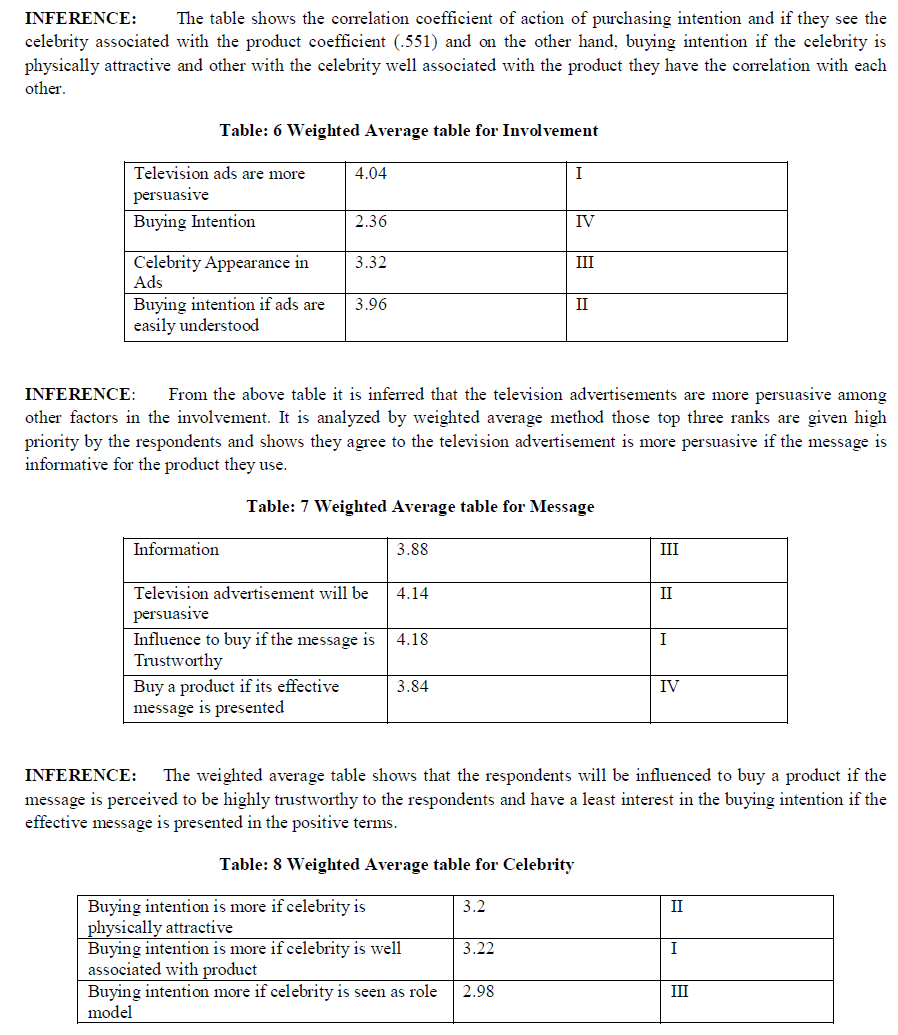ISSN ONLINE(2319-8753)PRINT(2347-6710)
ISSN ONLINE(2319-8753)PRINT(2347-6710)
Ms. Hemamalini. K.S*, Ms. Shree Kala Kurup**
|
| Related article at Pubmed, Scholar Google |
Visit for more related articles at International Journal of Innovative Research in Science, Engineering and Technology
Advertising has become the most effective ways for the companies to transmit the product information’s to the target consumers. The words, graphics and images are used to display the products in such a way with the intention to attract the consumers and make them to think and purchase the product among the other available other companies products. The main ways of attracting the consumer is by using all types of endorsement, using celebrity appearance, message strategy, and the involvement strategy. The previous researches have proved that celebrity endorsement, advertising appeal and advertising effect significantly and positively affects the consumers purchase intentions. There is a strong perception and purchase intentions are also reported in the research findings. The purchase intentions were positively correlated with perceptions with the message strategy and with the celebrity endorsement and with the involvement factors.
Keywords |
| Television Advertising, Message, Celebrity, Purchase Intention |
INTRODUCTION |
| Effective advertisements are advertisements that help the advertiser to reach its goals (Doyle & Saunders, 1990). According to most studies in different countries, revealed that TV has the biggest effects on audiences and persude them to start purchasing processes. TV as an advertising media has three key advantages. First, its influence on consumers’ taste and perception is pervasive. Second, it can reach a large audience in a cost-efficient manner. Third, its sound and moving images create a strong impact (Ramalingam2006).A consumer’s attitude and assessment and external factors construct consumer purchase intention, and it is a critical factor to predict consumer behaviour (Fishbein & Ajzen, 1975). Purchase intention can measure the possibility of a consumer to buy a product, and the higher the purchase intention is, the higher a consumer’s willingness is to buy a product (Dodds, et al., 1991; Schiff man & Kanuk, 2000). The main ways of attracting the consumer is by using all types of endorsement, using celebrity appearance, message strategy, and the involvement strategy. According to Wang, Cheng and Chu (2012) celebrity endorsement, advertising effect, and advertising appeal positively influence purchase Intention. Involvement has been extensively used as a moderating or explanatory variable in consumer behaviour (Dholakia, 1997; 1998). Research shows that under high involvement conditions, buyer decision processes are thought to proceed through extended decision-making, a series of sequential stages involving information search and evaluation of criteria.(Browne and Kaldenberg, 1997). Buda and Zhang (2000) revealed that important Message should come first to hold consumers’ interest and to convince them about the product advertised. |
II. LITERATURE SURVEY |
| Message: Message proves a significant relationship with the effectiveness of television advertisements towards the buying intention. Buda and Zhang (2000) revealed that important Message should come first to hold consumers’ interest and to convince them about the product advertised. Furthermore, consumers will be better influenced to buy a product if the Message is highly trusted (Tanner et al, 1991; Tesser, 1978). Indeed, according to Petty et al (1983) Message persuasiveness will be greater when a communicator has high accountability. Evidence by Rothman et al (1993), Maheswaran & Meyers Levy (1990) and Buda & Zhang (2000) suggests that positive Message framing should be used in an advertising campaign because it may be more persuasive than negative messages. |
| Celebrity: Chi, et al., (2009) proposed that an advertising endorser’s popularity, expertise, and attractiveness can appeal consumers’ eyesight in a short time and increase purchase intention. Good Celebrity image is perceived to impose prestige, good reputation and excellent image (Kambitis et al, 2002).Boyd and Shank (2004) showed that when there is a fit between the celebrity and consumer in terms of gender, consumers perceive the celebrity as more trustworthy, regardless of the product type endorsed by the celebrity. Indian advertisement has been placing a vital amount of importance on both recall and persuasion as brand differentiating messages. (Dixit, 2005).Laroche, et al. (1996) also testified that advertising endorser’s exposure rate can change consumer preference and attitude and promote purchase intention. Furthermore, Demetrio’s and Tim (1999) argued that consumers’ attention will still be kept with the presence of Celebrity in an advertisement rather than trying to retrieve the advertisement information itself (Shapiro and Krishnan, 2001). INVOLVEMENT: Involvement has been usually associated with a more active consideration of the information provided or a sensitive interest towards a product. Conversely, low involvement has been associated with a low relevance of the message or interest toward a product (Petty and Cacioppo 1979; Rothschild 1977). Previous studies proves the importance of involvement as a mediating variable in consumer context, it is reasonable to suppose that involvement also plays a role in the response to a mediated persuasive encounter of the type described by Friestad and Wright (1994), and by researchers have also explored that consumers are considered an important and inevitable factors towards the advertising .Similarly for the high involvement product advertisement the consumer may spend a considerable amount of time reading the copy; the argument in that copy strong or weak plays an important role (Kahle & Homer, 1985). Social psychologists have examined involvement in the context of persuasive communication addressing its ‘attitude object’, as a social issue (e.g. involvement with health and safety) (Sherif and Sherif, 1967; Laaksonen, 1994).“The television advertisement is more persuasive if message is informative for the product I seldom use” is consistent with the findings studied by Leone and D’arienzo (2000). Variables for the Study : In this study the Television advertisement and the Purchase intention is the independent variables and the Message, Celebrity and the Involvement are the Dependent variables for the study. |
III.RESEARCH OBJECTIVES |
| To study how effective are the television advertisements in teenager’s perspectives. To analyze whether the three distinguished elements (i.e. Involvement, Message and Celebrity) impose a significant relationship with the television advertisement in reference to the purchasing intention to the teenagers. |
IV.METHODOLOGY |
| In this study three hypothesis were recognized to test whether there are significant relationships between the dependent variable purchase intent and independent variables involvement, message and celebrity. Research Design: Descriptive research design was followed in this research. The study is to identify the effectiveness of television advertisement on the purchase intentions by the respondents. Sampling techniques: For conducting this study the Purposive sampling was adopted in selecting the respondents. Data collection and sample size: The study is based on primary data and secondary data and the respondents are from the graduation and post graduation college students in Chennai. The primary data was collected through questionnaires and the Secondary data were collected from books, journals, news papers and websites. Sample size: The study was done by 50 respondents, who were under graduates and post graduate students in colleges. Statistical tools: This data was analysed through weighted average method, Chi-square, Factor analysis. |
HYPOTHESIS |
| Ho – 1 Involvement has no significance relationship with the effectiveness of television advertisement in determining the buying intention. Ho-2 Message has no significance relationship with the effectiveness of television advertisement in determining the buying intention. |
| Ho-3 Celebrity has no significance relationship with the effectiveness of television advertisement in determining the buying intention. |
 |
 |
 |
 |
| INFERENCE: The weighted average table shows that the respondents are having buying intention more if the celebrity is well associated with the product and the respondents are having less interest in the buying intention if a famous celebrity appears in the television advertisement. |
VI. FINDINGS |
| The chi square analysis shows that there is a great relationship between the television advertisement and the purchase intention of the teenagers. It shows that there is an influence of celebrity relationship and celebrity appearance in the television advertisement in determining the buying intention. Teenagers have greater buying intention if the celebrity is well associated with the product and are less interested with the celebrity shown as a role model for the product or only an appearance in the advertisement. It represents that the teenagers are influenced to buy a product if the message is perceived to be trust worthy and are least interested to buy if the message is presented in the positive terms. |
VII CONCLUSION |
| This study provides interesting findings through chi-square, weighted average method from the perspective of the teenagers regarding television advertisement are effective in their purchase appeals and the study predicts the positive impact of television advertisement on customer attention and directly influences their interest for purchasing or to the desire for purchasing. The three descriptive elements- Involvement, Celebrity and Message has a significant relationship and importance with the effectiveness of television advertisement towards buying intention and has proved these three elements has a privilege to access to a large audience in an effective manner. |
References |
|